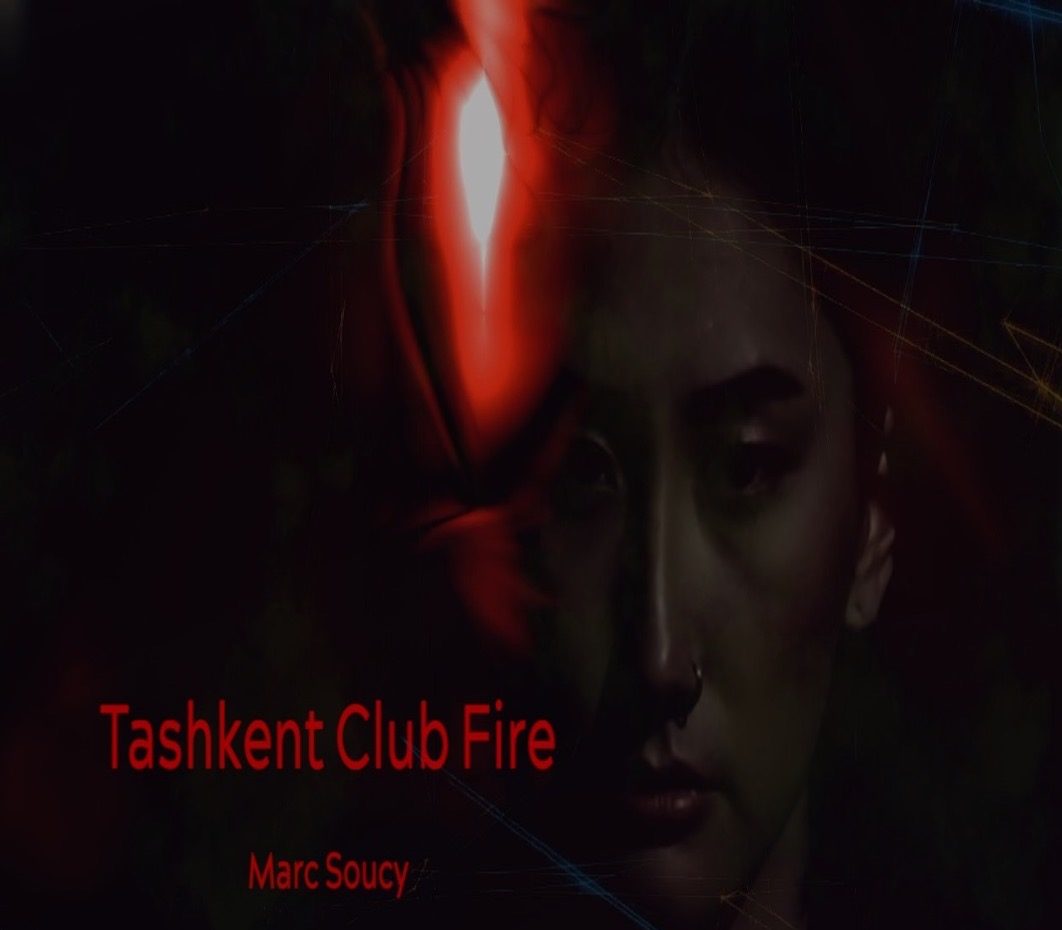Marc Soucy is no stranger to music. With a career that stretches back to the 1980s, he has spent decades cultivating a deep and nuanced understanding of sound. From his years as a full-time producer between 1997 and 2011 to his long-standing journey as a creator of original music, Soucy has built an impressive resume behind the scenes. Rather than confine himself to a single genre, Soucy leans into a fluid, genre-defying approach. His music draws upon elements of jazz, classical, new age, and bluegrass, but is bound by none of them. Each release promises to offer something new, a reflection of his restless creativity and commitment to keeping things “interesting” and “true to [his] musical heart”.
Released on April 18th, 2025, Marc Soucy’s latest single “Tashkent Club Fire” marks a bold and immersive introduction to his new music series “STIR: Soundscapes Evoking Realities Only Imagined”. With decades of experience behind the scenes as a producer and composer, Soucy steps into the foreground with a track that is as haunting as it is evocative. “Tashkent Club Fire” isn’t just a song; it’s a meticulously crafted auditory experience that challenges traditional genre boundaries while inviting listeners into a rich, atmospheric world. From the first moments, it is evident that Soucy is not interested in following formulas. Instead, he uses his deep musical intuition to construct something that feels fresh, cinematic, and deeply imaginative.
The opening of “Tashkent Club Fire” sets the tone with an ambient fade-in that is both unsettling and intriguing. A jittery, pulsating rhythm emerges through the haze, accompanied by a spectral, high-pitched vocal that seems to float above the instrumentation like a ghostly apparition. This initial section is not simply an introduction but an invitation into another realm, where every sound carries weight and intention. That eeriness then gives way to a hypnotic cascade of Arabic rhythms, laying a mesmerizing foundation for the track’s evolving identity. Soucy uses space and silence masterfully here, allowing the music to breathe and build naturally. The resulting tension is palpable, hinting at something mysterious and possibly ominous lurking just beyond the sonic veil.
As the track progresses, it seamlessly evolves into an entrancing fusion of Arabic rhythmic patterns and percussive layers. The incorporation of exotic instrumentation is not superficial or decorative; it is fundamental to the track’s emotional and narrative drive. These Arabic influences inject an otherworldly energy into the piece, grounding it in cultural textures while simultaneously lifting it into an abstract, imaginative space. The layering of persistent percussion with unconventional sounds reinforces the idea that this is a soundscape meant to evoke more than entertain. It tells a story through rhythm and resonance, a story that remains open to the listener’s interpretation.
One of the most compelling elements of “Tashkent Club Fire” is Soucy’s ability to blend organic and synthetic elements with such finesse. The presence of banjo and string instruments adds warmth and human touch to the electronic foundation, creating a delicate balance between digital and acoustic sounds. These instruments do more than provide variety, they serve as emotional anchors within a composition that is otherwise steeped in ambiguity and abstraction. The banjo, in particular, lends a surprising yet effective contrast to the electronic drums and synthesized basslines, suggesting themes of displacement or cultural convergence.
The track’s pacing is deliberate and dynamic. Rather than adhering to a traditional verse-chorus structure, “Tashkent Club Fire” unfolds in movements, more akin to a cinematic score than a pop single. Each section introduces new textures, new layers, and new emotional tones. At times, jazzy inflections bubble to the surface, suggesting fleeting moments of reflection, only to be pulled back into the song’s darker, more brooding core. These shifts in tone are not jarring; they feel like necessary evolutions within the musical narrative, pushing the listener forward into uncharted territory.
The production quality of “Tashkent Club Fire” deserves special mention. As a seasoned producer, Marc Soucy brings an expert’s ear to the mix, ensuring that each sound is crisp, clear, and purposeful. Every instrument has room to breathe, yet nothing feels out of place or disconnected. The transitions between sections are smooth and cohesive, a testament to his experience and meticulous attention to detail. The way he uses subtle effects to shape the mood is nothing short of masterful. This is not just music for the background; it demands and rewards active listening.
What makes “Tashkent Club Fire” particularly memorable is its storytelling power without relying on lyrics. The absence of words does not hinder the track’s emotional resonance; if anything, it enhances it. Soucy constructs a narrative arc through sound alone, using tension, texture, and rhythm to suggest conflict, loss, celebration, and memory. The titular reference to a club fire lends the track a tragic undercurrent, but the interpretation is left open enough to allow each listener to find their own meaning. It is this openness that gives the track its lasting impact, listeners are not told what to feel; they are guided toward their own discoveries.
In the end, “Tashkent Club Fire” is a powerful declaration of Marc Soucy’s artistic vision. It demonstrates his ability to draw from a wide palette of influences, jazz, world music, electronica, classical, and mold them into something singular and immersive. As the first entry in the STIR series, it sets a remarkably high standard, promising future works that will continue to explore the boundaries of sonic storytelling. For longtime followers of Soucy’s work, this release is a long-overdue spotlight on his immense talent. For new listeners, it is an unforgettable introduction to a unique and fearless musical voice.
For more information about Marc Soucy, click on the icons below:



